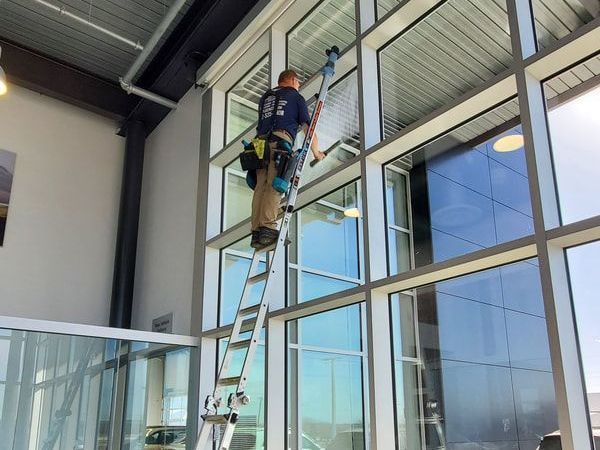MOLD. Unsightly. Unhealthy. Unnecessary.
Hazards of mold and algae. Mold? Algae? What’s the difference? Most times, the unsightly stuff on your roof is algae. Algae is pretty much benign. It thrives in humid areas of the country and loves to park itself where there are asphalt roof shingles. Most shingles in the Cedar Park/Leander area are asphalt. Algae will not harm your roof, but does not add natural beauty to your home. Mold is a whole other scenario. Black mold is a big problem here in the Cedar Park/Leander area. It appears on stonework, roofs and inside the home where there is a warm, moist environment. Mold can be a health threat. Allergies, watery eyes, headache, sore throat, sneezing and coughing can all be symptoms of a mold problem. Usually, the roof shows the first signs of mold. This is not a situation calling for a DIY solution. Leave this to the pros who have the expertise, experience, equipment and needed chemicals to do the job with care and as little interruption to the homeowner as possible. Check your roof today for signs of any problems.
How to clean mold and algae from concrete. Mold and algae. Ugly stuff on your concrete patio and driveway. Cracks in your pavers or bricks sprouting little growths? You can take care of these problems safely and without harsh chemicals with items you probably have in your home. The only thing you need to offer are time and energy. You will need:
- A bucket
- Water
- Hard bristle brush
- Hose with a “Power” nozzle attachment
- ½ cup each of borax and white vinegar
Mix the borax and vinegar in a cup of warm water and put the mixture in a spray bottle. Hose down the area to be cleaned. Spray the solution on a manageable section - do a little at a time – and let the solution soak in as much as needed to saturate the area. Then, scrub. Suggest using protective gloves. Keep wetting your brush and keep scrubbing until the entire area needing cleaning has been done. It is work but the results will be well worth it. Now rinse thoroughly using the “Power” nozzle attachment on your hose. Try to do your job when the sun will dry off your work area when you finish.
Other methods to remove mold, algae, etc., from concrete, flagstone and stone walkways, cement driveways would involve using mold and algae removers available at better hardware stores and big box home improvement stores. If you choose to use these products, be sure to carefully follow all directions. There are spray away mold and algae remover products on the market that will take care of these problems. As with any commercial product, wear protective gear. Even if a product claims to be “Safe,” take care near plants and gardens, covering them with a protective cover and taking care not to overspray. However, if your landscape rocks are in need of cleaning, there are ways to remove mold and algae from rocks in a garden. A little dish detergent in a bucket of water, generously applied and then give the rocks a good scrubbing with a stiff brush to remove any surface dirt. You can also use a pressure washer (On lowest setting) and spray rocks with just plain water. If you want to add a cleaner to the water, find one that is biodegradable. However, with a pressure washer, take care not to chip the rocks. Another method is, mix a solution of one part bleach to one part water and put in a spray bottle. Spray the solution on the rocks. If you accidentally overspray onto plants or vegetation, rinse visible foliage and soak the soil with 3” of water to saturate and disperse any bleach in the mix. If needed, scrub again after three or four days to finish up any missed spots and water again.
Removing mold and algae from stonework. Here in the Cedar Park/Leander area, our majority stone is limestone. Care must be taken not to chip this soft, porous, but beautiful stone. Soft washing to the rescue here. Pressure washing is to be avoided as too much “Pressure” could easily damage limestone. Our local, unsightly black mold can quickly ruin the appearance of a home’s stone siding. This is a big job that some may want to tackle as a DIY project. However, we strongly recommend leaving this task to the pros. Supplies and equipment needed, various chemical mixes and uses of each can be overwhelming to a homeowner and quite costly. Technique to do this job properly only comes with experience.
How to clean mold and algae from vinyl siding. Yes. Vinyl siding can be hit by black mold and algae from rainwater and condensation. A solution of bleach or vinegar will handle the problem. 30% vinegar to 70% water or 20% bleach to 80% water. Then scrub with a soft bristle brush. These same mixes can be used in a pressure washer or the preferred low pressure pump sprayer. A pressure washer might be quicker but if water gets behind the siding it could cause any exposed wood to rot. Take care not to get the liquid under the siding. Cover any nearby plants and shrubs to protect them from any overspray. Also, make sure any outside electrical connections are “Off” and covered.
For information on how we can help you with this and get your home looking amazing again, give us a call or contact us online.
A+ Window Cleaning LLC
1814 Conn Creek Road
Cedar Park, Texas, 78613
(512) 535-4308
phil@apluswcs.com



